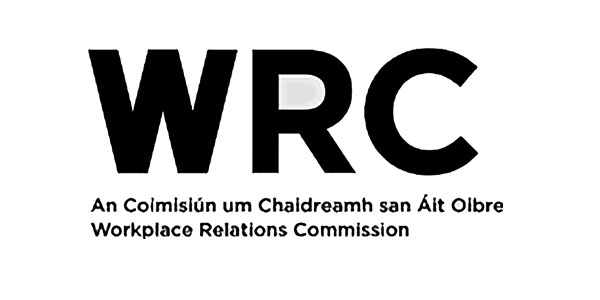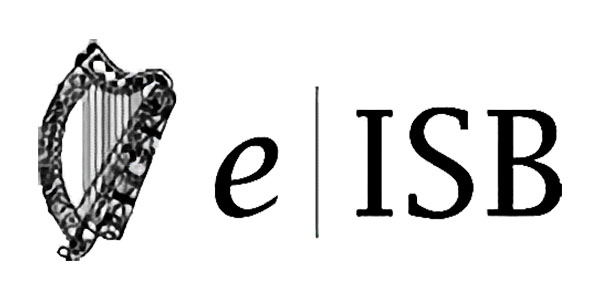Engaging in physical activity is a common requirement for many employees in the workplace, whether it’s lifting, lowering, pushing or pulling. Manual handling refers to a task that involves any of these movements, and it is responsible for over a third of workplace injuries across Ireland. Many of these injuries could have been avoided if the employer had provided adequate training or didn’t make an unreasonable request of their staff.
Manual handling injuries can lead to debilitating injuries both in the short and long term, causing physical and emotional distress and potential loss of earnings. If you’ve suffered an injury after engaging in some heavy lifting at work that you weren’t properly prepared for, then you may be able to claim financial compensation from your employer.

Steps in avoiding manual handling accidents
Good lifting technique
Lifting and laying objects is a common part of most people’s lives, whether it’s rearranging furniture, carrying shopping bags or stowing away boxes in the attic. No one really teaches us the correct technique for lifting things; we learn to pick up toys as babies and pretty much work the rest out from there.
In the workplace however, proper training on lifting technique is essential if you as an employee are required to pick up or transport heavy items. It might not be the most riveting thing you’ll ever learn, but good lifting technique will protect you from musculoskeletal injuries that could potentially impact your quality of life in the long term.
Plan the lift
Before you even attempt to pick up the object, think a few steps ahead to prepare yourself. Remove any obstructions from the route you’re going to take, and for a long lift identify any areas where you can rest the load. A table or a bench can be a useful location to set down the object and change your grip.
Correct posture
Adopting the proper posture when lifting is essential to avoid injury. Start by slightly bending the back, hips and knees, and avoiding stooping or squatting low. Pick up the object and try not to flex your back any further as you rise. Keep the load as close to your body as possible, at waist level.
Once you are holding the object, look straight ahead, and not down at the load you’re carrying. Your shoulders should be level and facing in the same direction as your hips, with any changes in direction led by your feet – no twisting the back.
When you’re setting the object down, do so carefully, with the same motion of bending your back, hips and knees.

Types of manual handling injuries
There are a whole range of injuries that can occur when you haven’t had the proper training for manual handling activities. Even when you have been trained, it’s also possible for you to sustain an injury if you attempt to lift something that is too heavy for you.
Back injuries claims
When you perform a lift, your back is the most vulnerable part of your body. All too often, people tweak muscles in their back due to improper lifting technique. Back injuries can be painful and debilitating, and severe ones can involve spinal damage and slipped discs.
Musculoskeletal disorders claims
The term musculoskeletal disorder refers to any injury, damage or disorder of the joints or muscle tissues in your arms, legs or back. These disorders affect the nerves, tendons, muscles and other supporting structures like your spine. Usually, these injuries are caused by repetitive physical movements carried out improperly, and result in damage, pain or stiffness.
Hand and foot injuries
Whether you’re lifting, lowering, pushing or pulling, it’s likely that you’ll be using your hands. This puts them at risk of injury when you’re carrying out manual handling in the workplace.
The surface of an object itself could cause injury, if it has sharp edges or is extremely hot or cold. As well as this, there is the possibility of crush injuries caused by fingers or thumbs getting trapped between the load you’re carrying and other surfaces.
Manual handling foot injuries mostly occur when the object being carried is dropped from a height, and are made worse when an employee is not wearing protective footwear. This can often lead to heavy bruising, crushing or broken bones.
Muscular strains
Our muscles are only designed to be able to handle so much wear and tear, which is why we experience strains and sprains when we overstretch them. Attempting to lift an object which is too heavy for you, or in unsuitable conditions that make it difficult to hold, can result in inflammation, bruising and pain.
Hernias
A common manual handling injury, hernias happen when an internal organ pushes through a weakness in the muscle wall, usually in the lower abdominal area. Overexertion through physical activity can be a cause of hernias, and quite often they will require surgery.
Causes of manual handling injuries
Physical activity always carries some risks, regardless of your circumstances. The human body is vulnerable, and it doesn’t take much for things to go wrong. Pushing, pulling, lifting and carrying a load can lead to injury, but what are the main causes for manual handling accidents?
The load
If an object is too heavy for you to lift, then it will most likely be difficult to carry. Attempting to carry an unsuitably heavy object can cause an injury at the start, end or during the lift.
Likewise, if the object is awkwardly shaped or hard to grip, then there’s a good chance it may fall and injure you during the lift. Loads with sharp edges or corners can also be dangerous if your bare skin comes into contact with them.
Another potential cause of a manual handling accident is the location of the load, for example if it’s placed slightly out of reach or too high up.
Work environment
Every workplace is different, and the nature of the work that is carried out there will go a long way to determining the risk factors for a manual handling accident. Someone who works on a construction site, for example, is more at risk of suffering a manual handling injury than an office worker.
In physically demanding jobs like construction, it’s vitally important that enough rest is given to workers. Even simple tasks can become tricky when you’re tired, which is why an employer or manager should carefully manage anyone who is engaging in jobs with repetitive movements and use of sustained force.
A poorly designed workplace, with badly planned pathways or cramped areas can be a large risk factor for manual handling accidents. Workers may have to resort to awkward movements, or be forced to adopt unnatural posture when carrying objects in these areas, which will raise the risk of injury.

Lack of preparation
If you haven’t been prepared correctly for a lift, there are so many things that can go wrong. Any worker who uses equipment to assist with manual handling activities should have received training to do so, and as we mentioned earlier, good lifting technique should be taught to employees.
When manual handling injury claims are processed, employee training records are reviewed to ensure that adequate manual handling training has been provided. If not, then the employer can be held responsible for the injury.
However, accidents can happen at any place and any time. Workers who are new to a role, or contractors in a new workplace, could still be susceptible to injury even with proper training. This is why it’s important for you to receive expert advice from our personal injury solicitors to examine the circumstances surrounding your injury, and determine if you are eligible to claim compensation.
Employer’s duty of care
Every employer has a duty of care to provide their employees with a safe working environment. For you to be able to proceed with a compensation claim after a manual handling accident at work, any injury you suffered must have been a direct result of negligence on the part of your employer.
What to do after a manual handling accident at work
If you’re unfortunate enough to ever be involved in a manual handling accident, it’s important to be aware of the steps you should take from the moment it happens. Making the right moves will ensure you have what you need if you decide to speak to one of our solicitors and pursue financial compensation.
Seek medical help
As with any accident, the first thing you should do is check yourself for injuries. Shock and adrenaline can lessen your ability to feel pain, so the extent of your injury might not be immediately obvious to you.
If you have sustained an injury, however minor, it is important to receive medical attention. Contact an ambulance for serious injuries, or go to your nearest accident and emergency ward or local GP to have a medical professional take a look.
Report the incident
With manual handling workplace accidents, it’s important that the incident is reported to the relevant personnel. If you have a manager, supervisor or immediate superior, let them know about what has happened as soon as possible.
If you are unable to perform your daily work tasks for more than three days, Irish law requires you to report the accident that is to blame. The procedure following an accident in the workplace will vary from employer to employer, but you will most likely have to fill out an Accident Report Form.
Collect information from witnesses
If anyone happened to be with or near you when you suffered the manual handling injury, make sure to collect their contact information. Their recounting of the accident could be important evidence if you proceed with a workplace accident claim. Furthermore, you should contact your employer or the relevant person if there is any CCTV footage of the accident available.
Document the accident
As we mentioned already, having the right information and evidence can be extremely helpful when the question of liability arises down the line. Therefore, you should do your best to record as many details about the workplace accident as possible.
As soon as possible after the accident, write down as many details about what happened in a timeline. Be clear about the details, and what exactly it was that caused your injury. You should support this account of the accident with photos of the object you were carrying, the location where the accident happened, and clear evidence of your injuries if possible.

Speak to a solicitor
At Baxter Mimnagh Solicitors we pride ourselves in obtaining the best possible results for our clients, while at the same time making the process as straightforward and as clear as possible. If you’ve been involved in a manual handling accident in the workplace and require expert advice or assistance, contact us today. Our team will do everything necessary to help you claim rightful compensation for your present and future needs.






